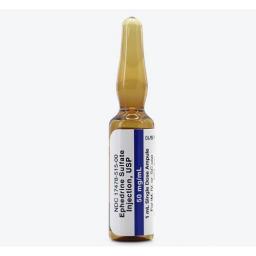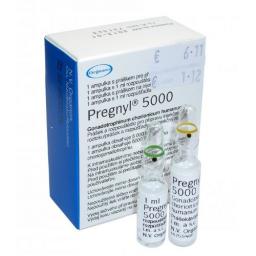 Women and alcohol
Women and alcohol
Due to size, body type and the way in which our bodies process alcohol, women become affected by alcohol far quicker than men. As a result women are also more vulnerable to the acute and chronic effects of alcohol misuse.
What is a standard drink?
One standard drink contains 10 grams of alcohol. When keeping track of your alcohol consumption it is important to count the standard drinks consumed, rather than cans or glasses. This is because the alcohol content of alcoholic beverages can often be higher than one standard drink. For example, pre-mixed drinks can be equal to 1.5 or more standard drinks and cocktails can be equal to two or more standard drinks.
All pre-packaged alcohol cans or bottles have the number of standard drinks listed on the label. Drinks such as wine, beer and spirits are sometimes served in glasses, so care must be taken. Ask bar staff if you are uncertain.
Standard drink guide
- 30ml spirits = 1 standard drink
- 100ml wine = 1 standard drink (Be careful! An average glass of wine contains 150-200ml; which is 1.5 – 2 standard drinks)
- 375ml (one can) full strength beer = 1.5 standard drinks (An average pot-glass of beer is 285ml (1.1 standard drinks) and an average pint-glass of beer is 425ml (1.6 standard drinks))
- 375ml light beer = 0.8 standard drinks (An average pot-glass of beer is 285ml (0.6 standard drinks) and an average pint-glass of beer is 425ml (0.9) standard drinks))
- 60ml fortified wine (e.g. port, sherry) = 1 standard drink
Low risk drinking
In 2007 the Australian National Health and Medical Research Council defined low risk alcohol consumption for women as, on average, no more than two standard drinks per day and at least two alcohol free days per week. Low risk consumption of alcohol (at or below the guidelines above) in conjunction with a healthy lifestyle does not appear to be associated with long-term illness. However, there are times during illness and when taking medication when you should not consume any alcohol. Your doctor can provide advice at these times.
High risk drinking
High risk alcohol consumption is best defined as anything that exceeds the consumption of more than two standard drinks per day. High risk drinking, including binge drinking (the consumption of excess alcohol over a short space of time) can put your health at serious risk.
Drinking excessively (four or more drinks at a time) even once or twice per week, such as on weekends, may cause health problems, increase risk of injury and accidents, and affect relationships with those close to you, even when you do not drink for the rest of the week.
Short and long-term effects of high risk drinking
The short-term effects of high risk drinking include:
- Poor sleep
- Change in mood, (often affecting relationships)
- Headaches
- Dehydration
- Problems with day-to-day functioning, including clear decision making
- Irritation to the lining of the stomach, intestine and pancreas, which may cause nausea, vomiting or diarrhoea
- Accidents, injury
The long-term effects of high risk drinking include:
- Depression
- Relationship difficulties
- Decline in quality of life
- Weight gain
- Permanent liver damage
- Dementia
- Ability to think clearly
- Alcohol dependence
- Low vitamin B, zinc and magnesium, especially when combined with irregular eating
- Increased risk of some cancers, particularly breast cancer
Alcohol and young people
According to the National Alcohol Guidelines, young Australian adults have the highest consumption of alcohol and are most at risk of alcohol related injuries such as road trauma, sexual coercion, falls, violence, accidental death (e.g. drowning, overdose) and suicide. Binge drinking (drinking to excess over a short space of time) is most common among 14-25 year olds.
It is important for young adults (and adults as well) to carefully weigh up the risks involved before drinking alcohol above recommended guidelines.
Handy hints for drinking responsibly
- Set a maximum number of drinks for the night and make a pact with your friends to help you keep to it
- Start and finish with soft drinks or water, or alternate between alcoholic and non-alcoholic beverages
- Choose drinks with a low alcohol content – e.g. light beers, top mixed drinks with extra soft drink or soda
- Do not skip meals when going out and drink alcohol with food to slow absorption
- Avoid salty foods that make you thirsty and make you drink more
- Avoid home-mixed drinks such as punch where you cannot determine the alcohol content
- Be careful of friends or waiters topping up your drinks for you – this makes it much harder to gauge how much you have had to drink
- Make sure your friends stick with you, all night
- Absolutely no driving and never accept a lift from a drunk driver
- Eat sensibly through the week, get some exercise and proper sleep
Alcohol and breast cancer
Regular alcohol consumption increases a woman’s risk of developing breast cancer. This risk rises with the level of alcohol consumed; therefore a reduction in alcohol consumption by women who drink alcohol regularly may reduce their breast cancer risk.
Alcohol and pregnancy
The 2007 guidelines advise pregnant women not to drink alcohol. High level drinking during pregnancy can cause a range of health problems for the unborn child, and can increase the likelihood of miscarriage. Alcohol in the bloodstream also passes through into breast milk which can in turn cause irritability, poor feeding and sleep disturbances in the child.
Alcohol and Stress
Excess or regular alcohol consumption may be an indicator for stress and can also worsen stress and depression
Alcohol and menopause
For women around the time of menopause, alcohol intake can exacerbate hot flushes
Questions and Answers
Q: Are there long term side effects for women who regularly drink small amounts of red wine?
The guidelines are based on the best available evidence to date. Until we have evidence to the contrary drinking quantities within the recommended guidelines, does not appear to cause any long term effects.
Q: How do you advise women to reduce alcohol intake when it is such an ingrained part of many people’s lives?
This is a complex question. If alcohol consumption is affecting your health then immediately ceasing intake is important. If you find this difficult, talk to your GP and seek expert help.
Many women may wish to modify their intake, where alcohol has become a habit. Expectations or pressure by friends or family to drink, frequent exposure to alcohol in social situations can interfere with good intentions. Practical tips such as setting a maximum number of drinks for the evening or taking a limited amount of money with you, making a pact or have a competition with your friends or family to see who can reduce intake. Alternate alcoholic beverages with water are just some ways to reduce your alcohol intake.
Best Steroid Products Online
Ephedrine HCL Injection
|
Parabolan 100
|
HCG Pregnyl 5000
|


